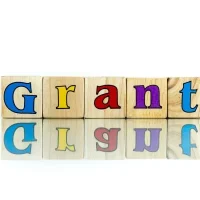Deadline: 15-Feb-22
The Greater Toledo Community Foundation is offering grant program under “Strategic Alliance Partnership (SAP)” to support the exploration and formation of collaborations that would enable Toledo area nonprofits to achieve more efficient use of financial and human resources.
The Strategic Alliance Partnership encourages community-level systems thinking to strengthen nonprofit capacity and improve service delivery. Since the process of forming partnerships can be complicated, the Strategic Alliance Partnership will make funds available for non-recurring costs associated with feasibility studies, professional or technical assistance fees, as well as staff and board training.
Qualified applicant organizations must have a demonstrated track record in providing quality services, board and staff support from all participating organizations for the alliance and the organizational capacity to carry out the proposed project successfully.
Goals
Goals of Strategic Alliance Partnership funding:
- To create economies of scale among nonprofits, resulting in cost savings and/or service enhancements (e.g. shared administrative services, shared staff to serve common constituencies, costs related to mergers).
- To strengthen infrastructure, management capacity and/or service delivery systems by supporting alliances among nonprofit organizations.
- To encourage collaborative partnerships that employ comprehensive strategies to strengthen community systems (such as improved education, employment, housing and/or health).
What exactly is a Strategic Alliance Partnership?
- Administrative Consolidation: Typically aimed at increasing efficiency, includes formal agreement for contracting, exchanging or sharing services. Organizations involved in administrative consolidations share decision-making powers over a number of areas including office space, staffing, etc.
- Corporate Merger/Acquisition: Includes full integration of programmatic assets and administrative functions. However, because nonprofit funding can be so closely tied to an organization’s name and original mission, many nonprofits “merge administratively” but retain both names and brand identities.
- Collaboration: Includes information sharing, program coordination and joint planning. Organizations involved in collaborations remain independent with full decision-making power over their own organizations but often form an umbrella organization to consolidate resources and create better opportunities for funding.
- Joint Programming can also be defined as a Strategic Alliance Partnership. However, this alliance should be thought of as a restructuring where organizations share the launch and management (and thereby enjoy significant cost savings) of one or more large programs or services that is lacking in the community. Organizations involved in joint programming share decision-making powers for the program or service while maintaining independence in managing their own organizations. Often joint programming leads to closer types of alliances. In order to be competitive with this type of grant proposal, significant cost savings and community impact must be demonstrated.
Ineligible Activities
The following activities are not eligible for support through this initiative:
- Projects designed to replace staff lines in individual organizations undergoing funding cuts.
- Projects designed to strengthen the management capacity of individual organizations in isolation.
- Funding for start-up programs for individual or partnering organizations.
- Grant funds may not be used to cover project expenses incurred prior to the Foundation’s receipt of the signed and dated grant agreement.
Criteria
Effective nonprofit organizations are vital to the healthy development and quality of life in the community. Challenges and opportunities for growth are diverse, complex and often best addressed through multi-disciplinary and multi-organizational approaches.
Contents of the Letter of Inquiry
The following information must be provided in the letter of inquiry:
- Project Description – Provide a brief description of the collaboration to be pursued. Identify the organizations that would participate in the collaboration and describe the anticipated roles each would play in the project.
- Support Requested – State the amount of support that is requested and specify how grant dollars would be used.
- Collaboration History – Briefly outline when discussions started for the proposed collaboration and any efforts that have already commenced to effectuate the collaboration.
- Outcomes – Briefly highlight the issues that would be addressed by the collaboration and the anticipated efficiencies and potential cost savings that would result.
For more information, visit https://www.toledocf.org/grants-2/#Open








































